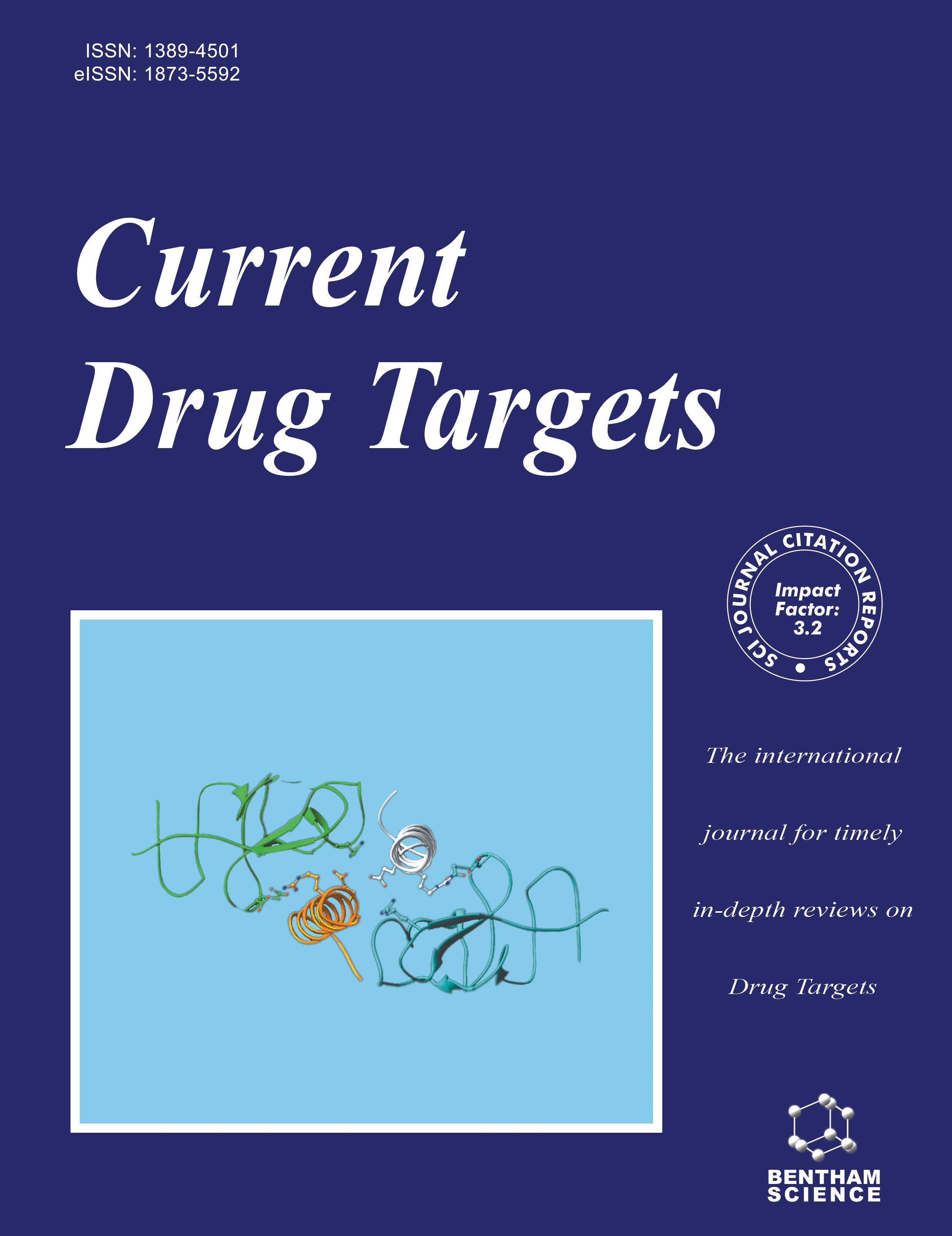- Home
- A-Z Publications
- Current Drug Targets
- Previous Issues
- Volume 23, Issue 2, 2022
Current Drug Targets - Volume 23, Issue 2, 2022
Volume 23, Issue 2, 2022
-
-
Antimycotic Drugs and their Mechanisms of Resistance to Candida Species
More LessFungal infections have shown an upsurge in recent decades, which is mainly because of the increasing number of immunocompromised patients and the occurrence of invasive candidiasis has been found to be 7-15 fold greater than that of invasive aspergillosis. The genus Candida comprises more than 150 distinct species, however, only a few of them are found to be pathogenic to humans. Mortality rates of Candida species a Read More
-
-
-
Venom of Viperidae: A Perspective of its Antibacterial and Antitumor Potential
More LessAuthors: André Teodoro, Fernando J.M. Gonçalves, Helena Oliveira and Sérgio MarquesThe emergence of multi-drug resistant bacteria and limitations on cancer treatment represent two important challenges in modern medicine. Biological compounds have been explored with a particular focus on venoms. Although they can be lethal or cause considerable damage to humans, venom is also a source rich in components with high therapeutic potential. Viperidae family is one of the most emblematic ven Read More
-
-
-
Research Progress of PARP Inhibitor Monotherapy and Combination Therapy for Endometrial Cancer
More LessAuthors: Ke Shen, Li Yang, Fei-Yan Li, Feng Zhang, Lei-Lei Ding, Jing Yang, Jie Lu, Nan-Nan Wang and Yan WangEndometrial cancer is one of the three most common malignant tumors in the female reproductive system. Advanced and recurrent endometrial cancers have poor prognoses and lack effective treatments. Poly (ADP-ribose) polymerase (PARP) inhibitors have been applied to many different types of tumors, and they can selectively kill tumor cells that are defective in homologous recombination repair. Endometrial cancer is c Read More
-
-
-
Gut Microbiota and Inflammatory Disorders
More LessAuthors: Vamsi Krishna, Naveen Kumar and Sugato BanerjeeThe gut has been colonized with bacteria, fungi, viruses, archaea, eukarya. The human and bacterial cells are found in a 1:1 ratio, while the variance in the diversity of gut microbiota may result in dysbiosis. Gut dysbiosis may result in various pathological manifestations. Beneficial gut microbiota may synthesize short-chain fatty acids like acetate, butyrate, propionate. Gram-negative organisms are the primary source o Read More
-
-
-
Thioethers: An Overview
More LessAuthors: M. İhsan Han and Ŧ#158;. Güniz KüçükgüzelSpreading rapidly in recent years, cancer has become one of the causes of the highest mortality rates after cardiovascular diseases. The reason for cancer development is still not clearly understood despite enormous research activities in this area. Scientists are now working on the biology of cancer, especially on the root cause of cancer development. The aim is to treat the cancer disease and thus cure the patients. The conti Read More
-
-
-
Retraction Notice to “Meet the Editorial Board Member”
More LessMeet the editorial board member page has been retracted at the request of editorial board member of the journal “Current Drug Targets”. Bentham Science apologizes to the readers of the journal for any inconvenience this may have caused. The Bentham Editorial Policy on Article Withdrawal can be found at https://benthamscience.com/editorial-policies-main.php. BENTHAM SCIENCE DISCLAIMER: It is a condition of Read More
-
Volumes & issues
-
Volume 26 (2025)
-
Volume 25 (2024)
-
Volume 24 (2023)
-
Volume 23 (2022)
-
Volume 22 (2021)
-
Volume 21 (2020)
-
Volume 20 (2019)
-
Volume 19 (2018)
-
Volume 18 (2017)
-
Volume 17 (2016)
-
Volume 16 (2015)
-
Volume 15 (2014)
-
Volume 14 (2013)
-
Volume 13 (2012)
-
Volume 12 (2011)
-
Volume 11 (2010)
-
Volume 10 (2009)
-
Volume 9 (2008)
-
Volume 8 (2007)
-
Volume 7 (2006)
-
Volume 6 (2005)
-
Volume 5 (2004)
-
Volume 4 (2003)
-
Volume 3 (2002)
-
Volume 2 (2001)
-
Volume 1 (2000)
Most Read This Month
Article
content/journals/cdt
Journal
10
5
false
en


